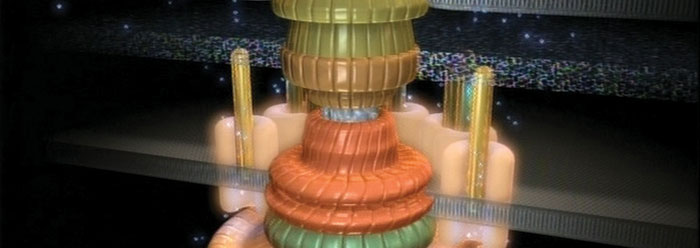
Virus Motors Impossible for Evolution
Bacteriophages are non-living yet specialized viruses that hijack cells to clone more viruses. In this way, they help to maintain balanced bacterial populations. When a new “phage” is assembled within a host cell, it is faced with a difficulty—how to package its DNA, which is 1,000 times longer than the diameter of its capsid, the tiny vessel that holds it.

A New Role for Interferons: Teaching
Interferons are signaling proteins in immune systems that have long been appreciated for their role in defending the body against viral attacks. Interferons hinder viruses from multiplying inside host cells, activate killer cells and macrophages (engulfing cells), and communicate with lymphocytes to help host cells deal with viral infection.

Stressosomes: Bacteria's Ingenious Coping Mechanism
Advancing technology continues to reveal new aspects of cellular function. Molecular biologists have known that “stressosomes,” large protein complexes in bacterial cells, play some role in enabling single-cell life forms to cope with ever-changing environments.

Did God Make Brain-Eating Amoebas?
Brain-eating amoebas caused six deaths last year, representing a spike in cases that concerns health officials. WebMD reported in May that the young men who died had picked up the amoebas while swimming.1
Many skeptics argue that a God who could make creatures that do this would not be the all-good God described in the Bible. So, where did these organisms come from?

Debating Design: The Bacterial Flagellum
Molecular motors--machines made of protein on the submicroscopic scale--are clear evidence of creative design (Romans 1:20). However, scientists who approach the data from an evolutionary perspective are quick to counter such design in the evidence.








